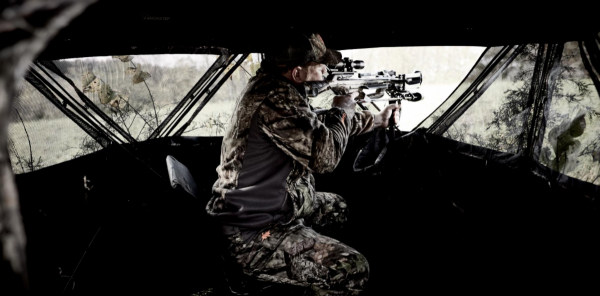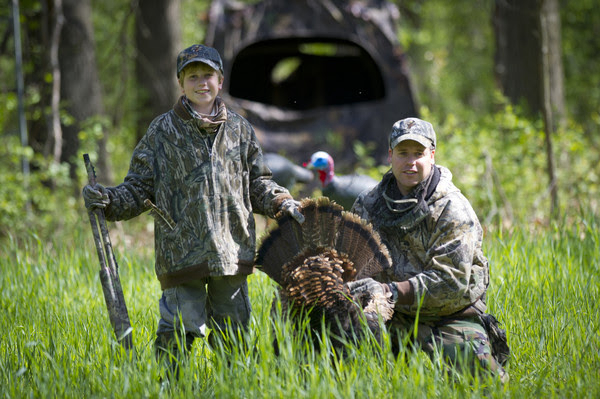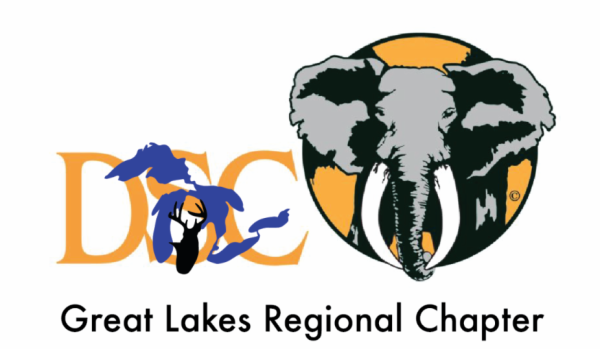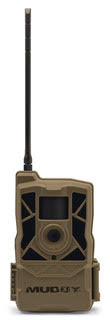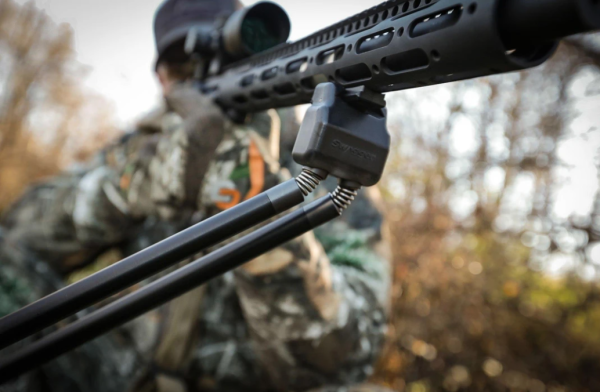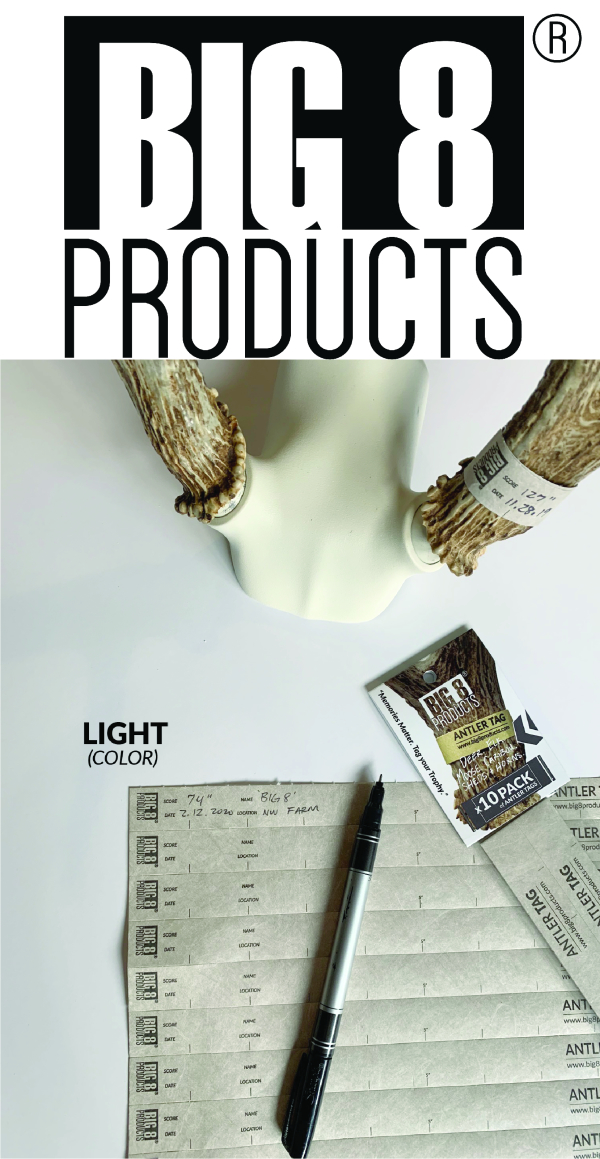By Glen Wunderlich
Charter Member Professional Outdoor Media Association
Spring is for the birds. Everywhere we look, birds are claiming territory to raise families. Dominance is the rule of the land and claim-jumpers learn quickly that they’ve entered dangerous space when they are attacked for violating another’s area. Even though they may have traveled thousands of miles with feathered associates, it’s every bird for themselves now.
Although turkeys don’t migrate, currently they are also in the homemaking business and will pester family members and strangers alike to the point of all-out aerial warfare, as they jump into the air to fight. It’s serious business; it’s a fight for survival of the species and dominance is the goal.
Inside a hunting blind is a great place to video record the action and to simply enjoy the show.

Photo from inside the blind
And, if you’d like to make some memories with a youngster, there are always learning moments to share along the way. Best of all, opportunities exist for the younger generation to actually hunt with adults, even if smoke-belching, heavy-loaded shotguns are too much for them to handle. And, with the scarcity of ammunition of any kind, it may be time to think crossbow.
Crossbows’ use has surged the past few years, and although they may have been purchased specifically for deer or other four-legged beasts, they can double as turkey tools. They have certain advantages some of us may not have considered, although set up afield is key.
First, it is necessary to determine if a given youngster can handle the crossbow rested on a bench. Some triggers, like the one I have on my Horton bow, are difficult, if not impossible, to manage for little fingers.

Horton Vision Crossbow
And, management means shots accurate enough to ethically kill the big birds. Unlike shotguns, however, head and neck shots are not necessary, but the kill zone is still quite small amid the seemingly large bodies. Learn the best shot placements before heading afield.
A large blind is needed – either store-bought or otherwise.

Blind brushed in
It needs to accommodate a shooting bench, upon which the bow can be placed and still have enough room for 2 people and gear. Practice afield can go a long way to success by shooting at targets at various distances. Without a rangefinder, field markers set at specific distances will help when the action comes your way.
Don’t overlook the advantages of a blind – especially with fidgety kids. Not only do they minimize any chance of being detected, they offer warmth from the chilly air and dryness should rain commence. In addition, the strange phenomenon of becoming invisible to turkeys when hunting from a blind is mind-boggling; as good as turkeys’ eyesight is, they just don’t get it.
Hunters now have more time to chase the birds. In years past we had to choose between early and late seasons – both with distinct advantages and disadvantages. However, the two seasons have been combined for private land in the southern portion of Michigan into a single season from April 17 through the end of May.

View from blind
So, get out there and enjoy the unpredictable action and don’t forget to take your camera. You will be making memories that you can share over the years, and with YouTube, you can share them with anyone in the world anytime you choose.






